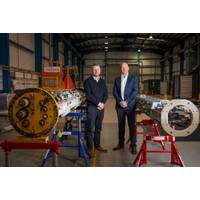
Proserv and Verlume Team Up for Subsea Power Efficiency Boost
opportunities in the subsea power and renewable sectors and bring innovative technologies to the rapidly evolving clean energy market.Under the terms of the MoU, Proserv and Verlume will integrate Proserv’s subsea control and communications systems with Verlume’s energy management and battery technology to improve the efficiency of subsea power delivery.This enhanced level of system integration will reduce energy consumption by as much as 50% and significantly improve operational flexibility, reliability and reduce costs, according to the companies.By utilizing an integrated approach, a unique
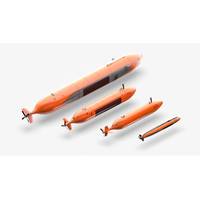
Kongsberg Reels In $44M in Hugin AUV Orders in Q2
in March. The AUV is designed for deployment from unmanned surface vessels (USVs), small surface vessels, and from shore. Measuring less than 4 meters long, HUGIN Edge, the newest member of the HUGIN family of AUVs, weighs approximately 300kg. Kongsberg says the AUV is packaged with the latest battery technology to provide more than 24 hours of operation at depths of up to 1,000 meters. Read More Here.Commenting on the recent AUV contract awards, Kongsberg Maritime, SVP Stene Førsund said: "These latest contracts are a true acknowledgment of a team effort over many years
![[L to R]: Chris Green, Washington State Department of Commerce Assistant Director for the Office of Economic Development and Competitiveness; Elliot Smith, Director of real estate and properties, Port of Bellingham; and Geir Bjørkeli, CEO of Corvus Energy. Photo courtesy Corvus Energy](https://images.marinetechnologynews.com/images/maritime/w200h200padcanvas/chris-green-washington-132295.jpg)
Corvus Energy to open new Battery Factory in the U.S.
As the maritime industry increasingly moves towards propulsion solutions that help cut emissions, battery technology is increasingly taking center stage on a number of ship, boat and offshore energy installations. Leading the charge are a number of battery manufacturers globally, including Norway’s Corvus Energy, which announced that the company is expanding its US operations by opening a new factory in the Port of Bellingham, Washington.The U.S.-based manufacturing facility, starting with Corvus’ Orca battery, will have an annual capacity of 200 MWh of stored energy capacity, with the

Deployable from USV: Kongsberg Launches New AUV at Oceanology International
," and is designed for deployment from unmanned surface vessels (USVs), small surface vessels, and from shore.Measuring less than 4 meters long, HUGIN Edge, the newest member of the HUGIN family of AUVs, weighs approximately 300kg.Kongsberg says the AUV is packaged with the latest battery technology to provide more than 24 hours of operation at depths of up to 1,000 meters. The general arrangement includes the next generation of Kongsberg's synthetic aperture sonar, a high-frequency multibeam echosounder and a swappable camera or sub-bottom profiler. This configuration has been
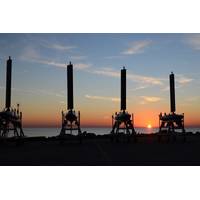
Autonomy: Sun, Sail & Subsea – Not a Holiday, but a Hybrid UxV Platform
to underwater marinize the USV payloads and the reverse on the AUV payloads. It’s a very complex eco-system that we live in. It’s literally a sailboat that’s a submarine and the complexities that come with that are challenging.” “The ability to push the envelope with battery technology, solar panel technology, and power management is also something we’ve also had to get good at pretty quickly,” adds Decker.They’ve also learned to simplify as much as they can. “We utilise a dual-element wing on the sail that had probably 20 feet of cable that wrapped
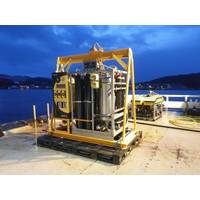
Putting Power on the Seafloor is a Fuel Cell Future
chasing a goal of supplying long-term subsea power in remote locations, via fuel cells, to users including oceanographic observatories to underwater vehicles. Elaine Maslin takes a look.Long term operation of subsea equipment or instruments in remote locations poses something of a challenge. While battery technology has improved vastly, it’s still not sufficient for long term deployments.For a decade or so, a number of projects have been working on ways to provide seafloor based remote power systems. This could be to power subsea production systems, resident remotely operated vehicles (ROVs) or autonomous

Ocean Infinity Orders Six 85m Robotic Offshore Vessels from VARD
inspection, maintenance, and repair and light construction work to offer remote, ultra-low carbon services to the offshore energy market. Like the 78m series currently under construction, the new design continues to drive minimalized environmental impact with its integration of new fuel-cell and battery technology.”Dan Hook, Chief Technology Officer at Ocean Infinity said “The team has made significant progress in recent months; commissioning our shore-side remote control infrastructure, running ROVs remotely and developing our fleet management capability. The way in which we will optimize

Inside Sofar Ocean Technologies' Epic Quest to Open Ocean Data
the ocean, so it has salt water and storms and anything electronic generally doesn’t like that very much. (But to answer your question): communications have traditionally been very expensive through monopolies in satellite communications, and that’s changing rapidly. Power. Advances in battery technology and solar capture has made it possible for us to build a low cost completely autonomous system that can stay out in the ocean forever and provide useful information. More generally, advances in IOT technology, the ability to build something extremely low cost that is as capable as maybe your
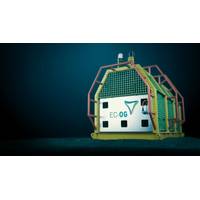
Bob Black Joins EC-OG Board
core Intelligent Energy Management System (IEMS) and Halo technologies are dedicated to providing intelligent energy management and renewable energy integration to high value applications, using in-house developed smart microgrid controllers combined with high density, safe and reliable Lithium-ion battery technology.Richard Knox, managing director at EC-OG, said, “Battery systems have been identified as central to the transition to a low carbon energy system. In the underwater environment, our battery system technologies provide a reliable, local power enabler for remote and autonomous operations
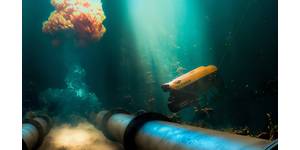
 February 2025
February 2025





